In today’s newsletter podcast, America’s Favorite Retired Horticultural Professor, Debbie Flower, explains plant hormones, and how they can help you become a better gardener.
Want to propagate your own plants from cuttings? Depending on the plant, hormones can help.
The book, “Propagating Plants” by Alan Toogood has more information. Online, the site “Untamed Science” has an easy to understand page on how the five major plant hormones work.
Want bigger table grapes?
Hormones, such as Gibberellic acid can help. If you’re a commercial grower. According to the California Garden Web:
“Growers use several methods to increase cluster and berry size: cluster and berry thinning; trunk girdling; and gibberellic acid sprays. Gibberellic acid is a synthetic plant growth regulator and is not available to home gardeners. Some increase in size can be achieved by cluster and berry thinning and trunk girdling.”
How To Increase The Size Of Your Seedless Table Grapes
Mid-Spring is the best time to thin out, trim and fertilize seedless table grapes.
1. Thin out the bunches so that there is at least six inches of space between each remaining bunch ot table grapes.
Late April to mid May is best for this.
2. Cut off the "tails" from the remaining bunches at that same time. This is the lower one-quarter to one third of the bunch, where it begins to taper down in size. This will send more energy to the remaining grapes on the bunch.
3. Fertilize...or not. The book, "The California Master Gardener Handbook" advises that a half pound of ammonium sulfate can be applied for each vine at berry set (when the berries are about a quarter-inch big, usually in May). Remember, though, that too much nitrogen can result in an overabundance of vine growth and not enough grapes for eating. The late Chuck Ingels, Sacramento County farm advisor, said that very little nitrogen, if any, is needed. If you opt to use another commercial fertilizer, follow label directions.
4. Water. The same book advises gardeners to apply about 50 gallons of water per week per vine, during the hottest months (June through August) in the Central Valley of California. Apply less (about 35 gallons a week) during May and September.
5. Girdle the Stems in late May. According to Chuck Ingels, in the Sacramento County Cooperative Extension brochure, "Grapevines: Girdling and Cluster Thinning to Increase Berry Size":
Girdling removes the inner and outer bark from around the trunk. The inner bark, or phloem, is where carbohydrates produced by photosynthesizing leaves move to developing organs (including fruit and roots). Removal of a strip of bark prevents the translocation of carbohydrates to the root system thus making more available for fruit growth until the girdle heals in about four weeks. Girdling can make berries about 30% larger if done correctly. If is particularly effective on seedless varieties; no effect on seeded varieties.
How to Girdle Vines: Remove a strip of bark, down to the wood, that is 1/8 to 1/4 inch wide. A double bladed girdling knife makes the job easier. It is essential that all the phloem tissue is removed, so press fairly hard. Check for completeness about 20 minutes afeter the girdle is made. A proper girdle will have the appearance of an all white, fibrous ring of wood (xylem). Remove any brown portions of the ring; if there is even an 1/8" of phloem tissue left, the girdle's benefits are lost. Be sure not to cut so deep as to damage the water conducting xylem and weaken the vine. With a proper cut, the ring should just pop out."
For commercial growers: “Using Plant Growth Regulators to Increase the Size of Table Grape Berries”
Thank you for listening to the Garden Basics with Farmer Fred podcast! It’s available wherever you get your podcasts. Please share it with your garden friends.
As an Amazon Associate, I earn from qualifying purchases from some of the underlined links in the newsletter. This is how I am trying to keep this a free newsletter. And as long as you buy whatever you want from Amazon using any of those links to get into the Amazon site, I get a few pennies. Thank you.
Thanks for Subscribing and Spreading the Word About the Beyond the Basics: The Garden Basics with Farmer Fred newsletter, I appreciate your support.
Fred Hoffman is also a University of California Cooperative Extension Master Gardener in Sacramento County.

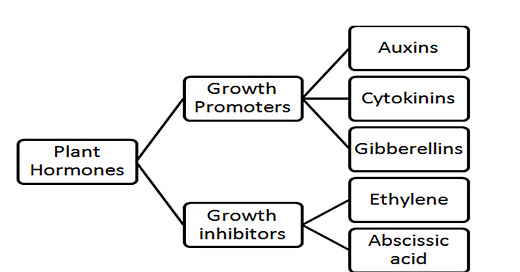




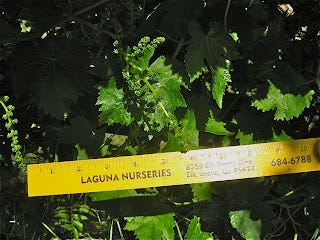

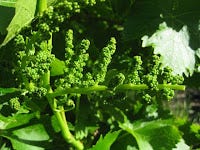




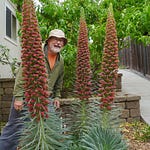

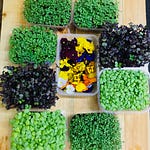
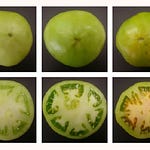

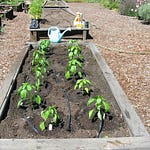
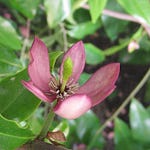
Share this post